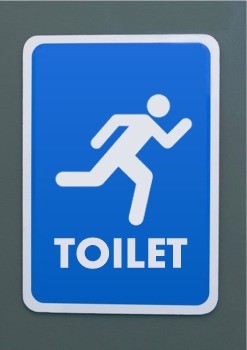 Overactive Bladder (OAB) Syndrome
Overactive Bladder (OAB) Syndrome
An overactive bladder can affect men and women of any age, increasingly with age.
Normally, a bladder needs to be emptied between 4 and 8 times a day, depending on the quantity of fluid taken in. As the bladder fills up, the detrusor muscle around the outside gradually stretches until the bladder is about half full, when most people will get the message to visit the toilet. When a bladder is overactive, the detrusor muscle contracts too soon, and too often.
If your bladder wants to squeeze out urine even if it is not full you could be suffering from an overactive bladder. The sudden urge to go to the toilet is called urgency. If you don’t get there in time and have an accident, it’s called urge incontinence.
You may also wake often at night needing to go to the toilet, or even not wake up so you wet the bed.
Causes of Overactive Bladder
Drinking caffeine, fizzy and sweetened drinks or alcohol can also irritate the bladder and cause urgency and frequency.
Another common cause is a urinary tract infection, which can be determined by a simple urine test.
Pregnancy and childbirth, ageing, obesity, chronic disease, some medication, prostate problems (men), some surgical procedures and conditions such as diabetes can go towards developing an overactive bladder.
Diagnosis of Overactive Bladder
Lifestyle changes can help: drink up to 2 litres of plain water, fruit juice or fruit and herbal teas every day. Try to stay away from, or cut down on, drinks containing caffeine, such as coffee, tea and chocolate, alcohol, fizzy drinks and fruit teas containing hibiscus, which can irritate the bladder.
Bladder Training and pelvic floor muscle exercises
It’s natural to try to make sure you aren’t “caught short”, but getting into the habit of going to the toilet too often can worsen the problem; as the bladder gets used to holding less and less it shrinks and becomes more sensitive and overactive.
One of the first treatments you may be offered is bladder training, which involves learning techniques to increase the length of time between feeling the need to urinate and passing urine. The course will usually last for at least six weeks.
Pelvic floor muscle exercises can be very useful as well: a stronger pelvic muscle squeeze will help you hold on longer when you feel you want to rush to the toilet. The exercises can help you reduce the urgency, and working your pelvic muscles relaxes your bladder, making it easier to hold more urine.
At Somerset Urology Associates our continence advisers and incontinence physiotherapists are particularly experienced at teaching bladder training techniques.
Medication
Medications, used alone or in combination with bladder training, can be very effective, although side effects can be dry mouth or nausea, and they can take several weeks to make a difference in your symptoms. But they can’t cure incontinence.
Electrical stimulation
Electrical stimulation of the pelvic floor can help reduce urgency and frequency symptoms associated with overactive bladder. This treatment is for both men and women and is most useful for those who find it difficult to do pelvic floor muscle exercises on their own.
More Serious Interventions
Botox Bladder Injections
Botox can be used to help patients with difficult-to-treat urge incontinence. It works by paralyzing the bladder muscle, reducing bladder contractions to a normal level. Relief normally lasts six to 12 months, and repeat injections are often needed.
Sometimes the nerves regulating the bladder can become hyper-reactive, sending strong signals to empty before the bladder is full. These abnormal signals can be blocked by nerve stimulation therapies. [Read more at Incontinence]
Living with an overactive bladder
Some people cannot be completely cured of an overactive bladder problem, or may need additional help. Modern products and devices are increasingly effective and discreet, helping you to manage symptoms and allow you to get on with your daily activities with confidence.
